Summer is the perfect time to embrace the great outdoors and enjoy delicious food in relaxed surroundings. Whether you are planning a family outing or a romantic date, these picnic tables offer a fantastic opportunity to create lasting memories.
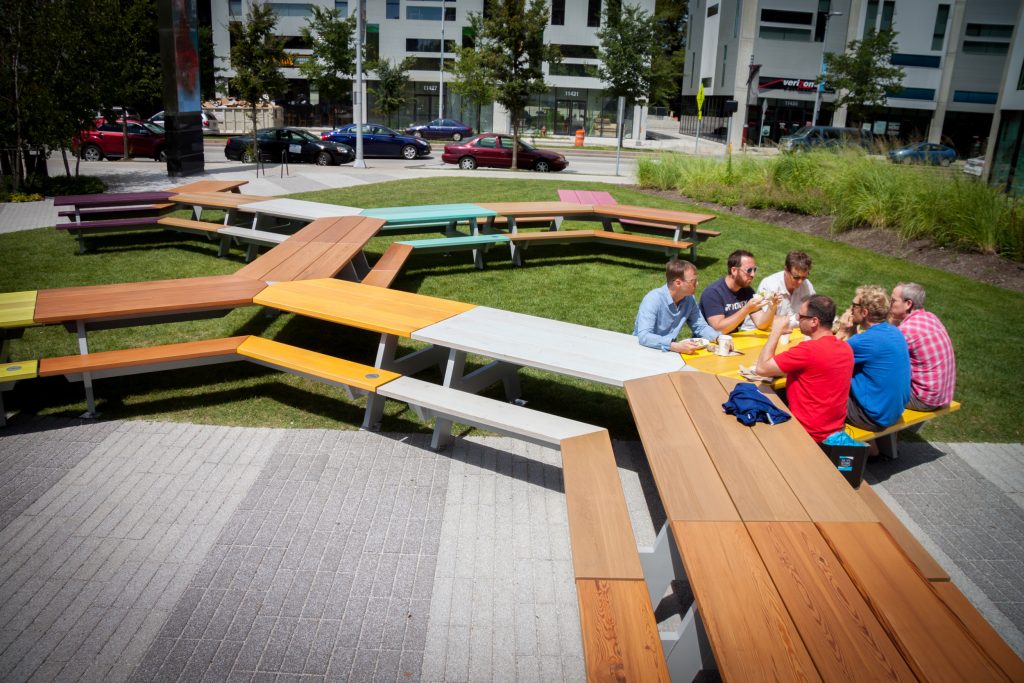
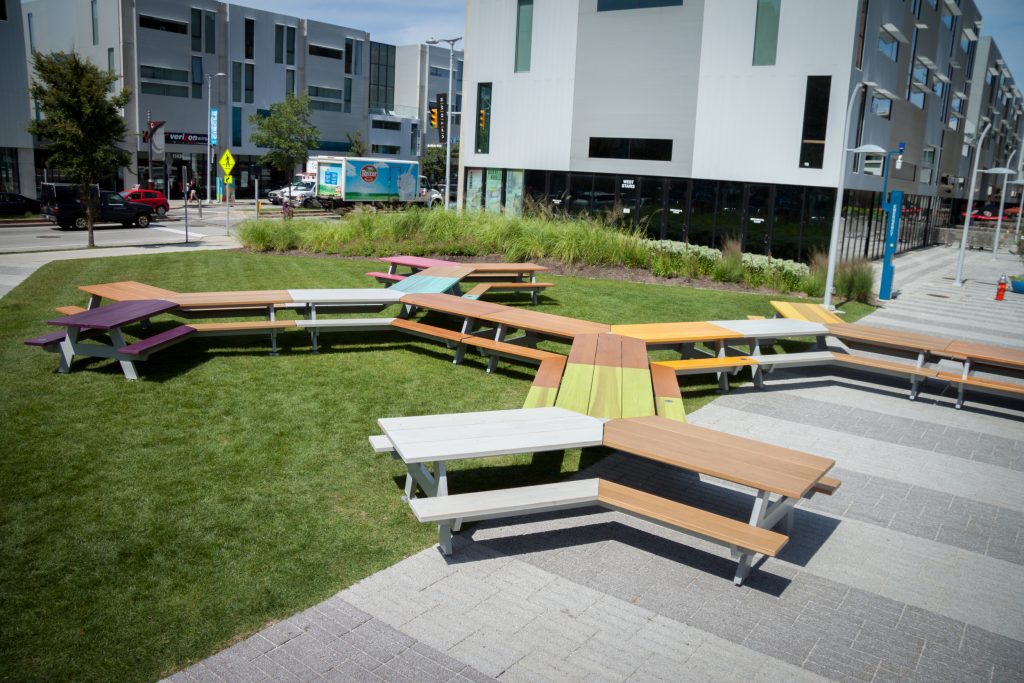
The Great Picnic by Mark A. Reigelman II (also header image)
The Great Picnic has been envisioned by Brooklyn based artist Mark A. Reigelman II to enhance the tradition of eating outdoors, which he believes is fundamental to the enrichment of American social fabric. The modular unit conceptually reflects the confluence of people and ideas that picnic tables encapsulate.
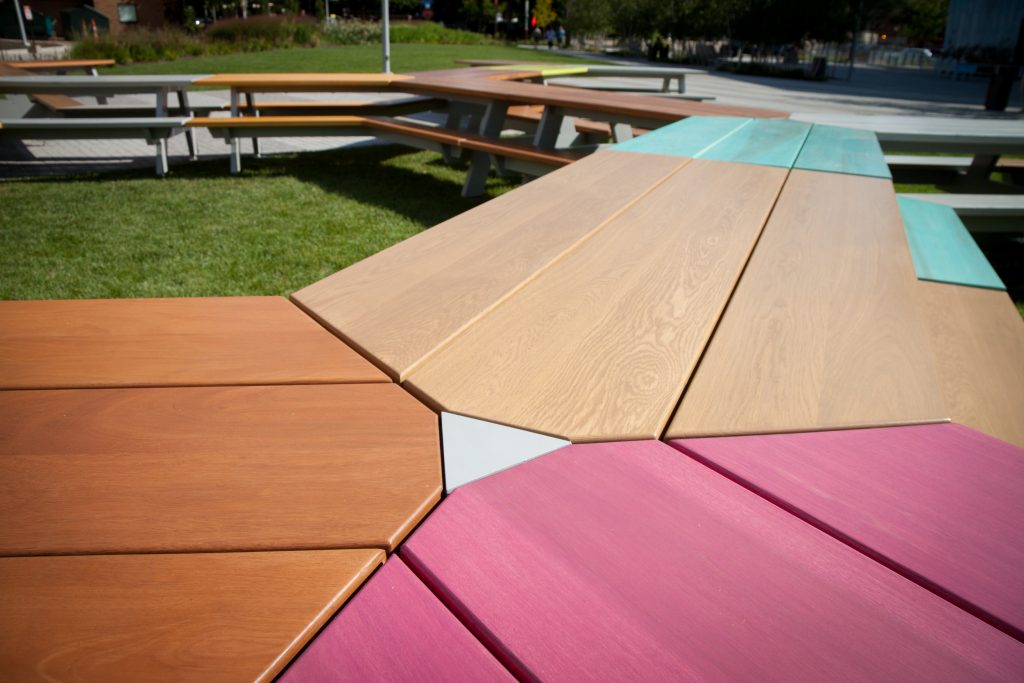
The Great Picnic by Mark A. Reigelman II
Each module is composed of three individual intersecting tables constructed from wood. The use of different species that range from certified reclaimed heart pine and douglas fir to African mahogany and white oak directly reflect the notion of convergence in the design.
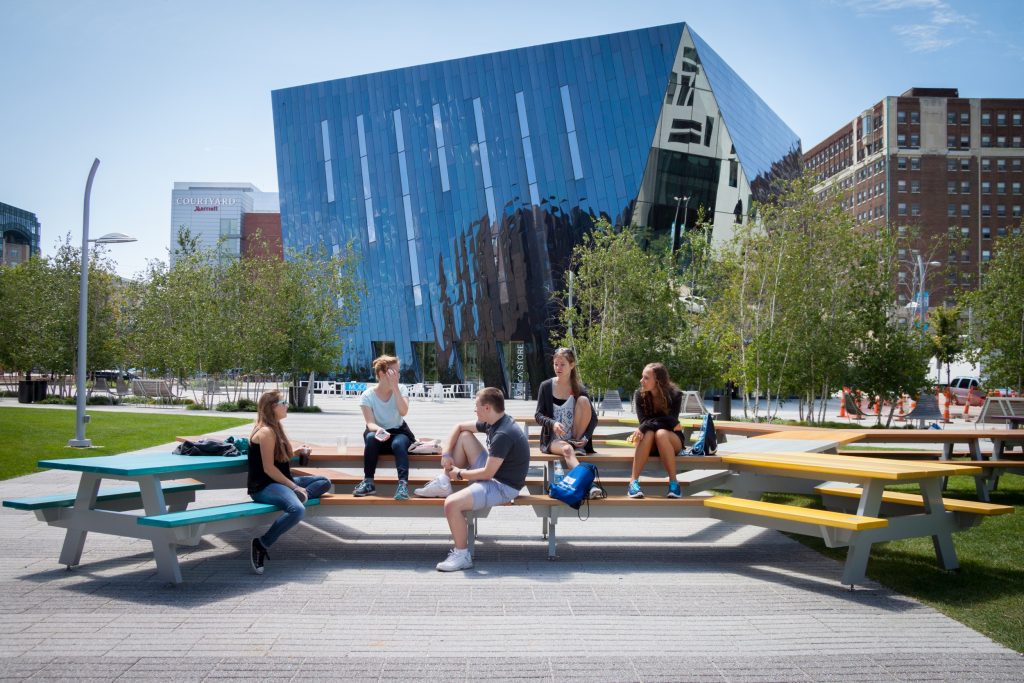
The Great Picnic by Mark A. Reigelman II
Commissioned by Kathy Barrie, director of the Putnam collection and positioned in front of the Museum of Contemporary Art (MOCA) in Cleveland, the Great Picnic covers a distance of over 18 metres and can accomodate more than 100 people.
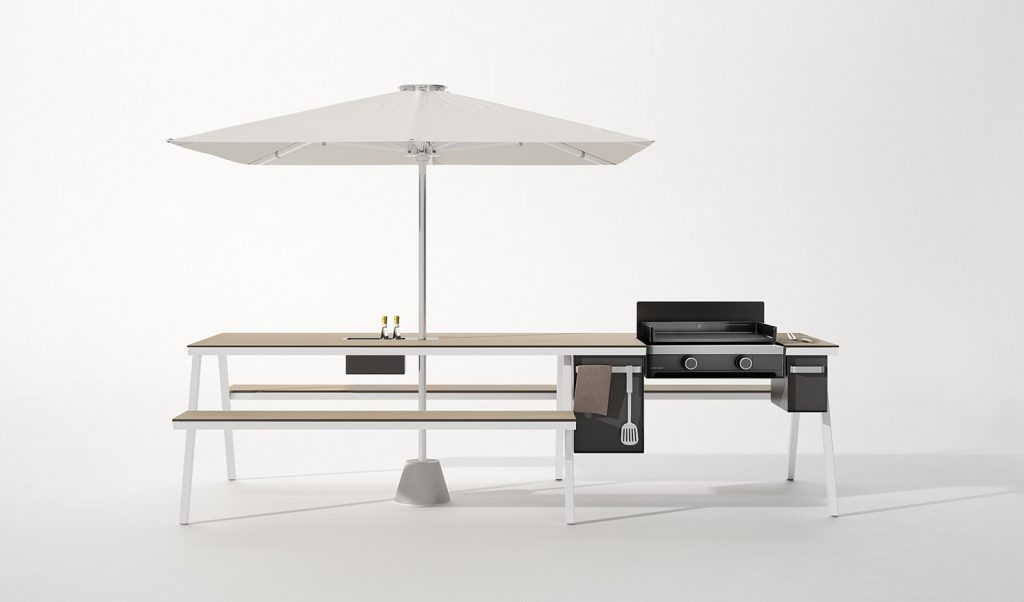
Piknik by Iratzoki Lizaso
Iratzoki Lizaso, an industrial design studio founded in the Basque Country by Jean Iratzoki and Ander Lizas, has reimagined the traditional picnic table, bringing together the plancha grill, parasol, bottle bin, housing for the gas cylinder, accessories and storage.
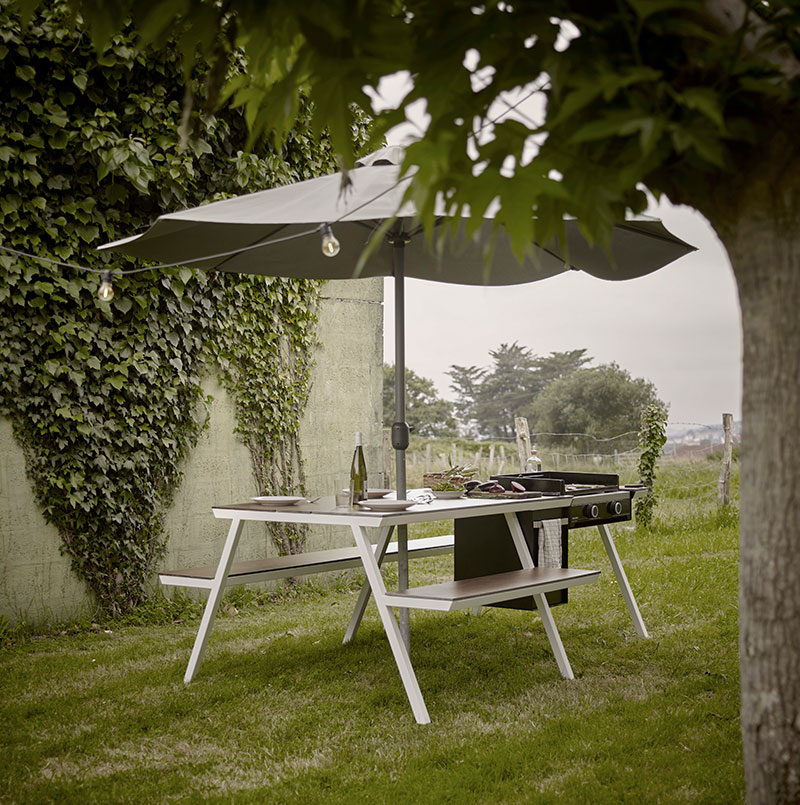
Piknik by Iratzoki Lizaso
Made of metal and wood, the multi-functional unit titled Piknik allows the cook to enjoy the company of friends and family while preparing the food.
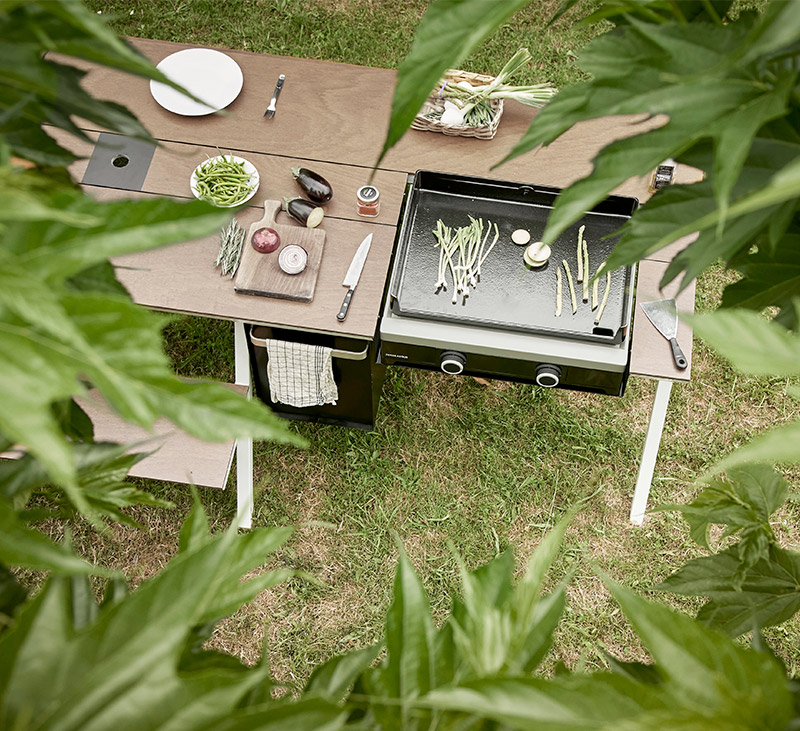
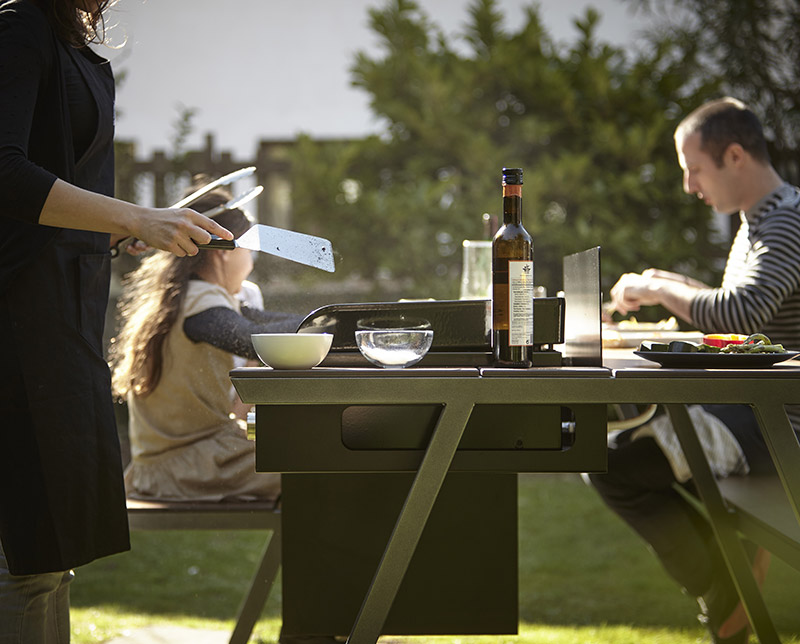
Piknik by Iratzoki Lizaso
The simple object with two benches offers a simple and practical way to combine cooking and eating. It is available in various layouts ranging from a family-size table to larger designs for groups.
The project was originally developed for Forge Adour, a pioneering manufacturer of domestic planchas.
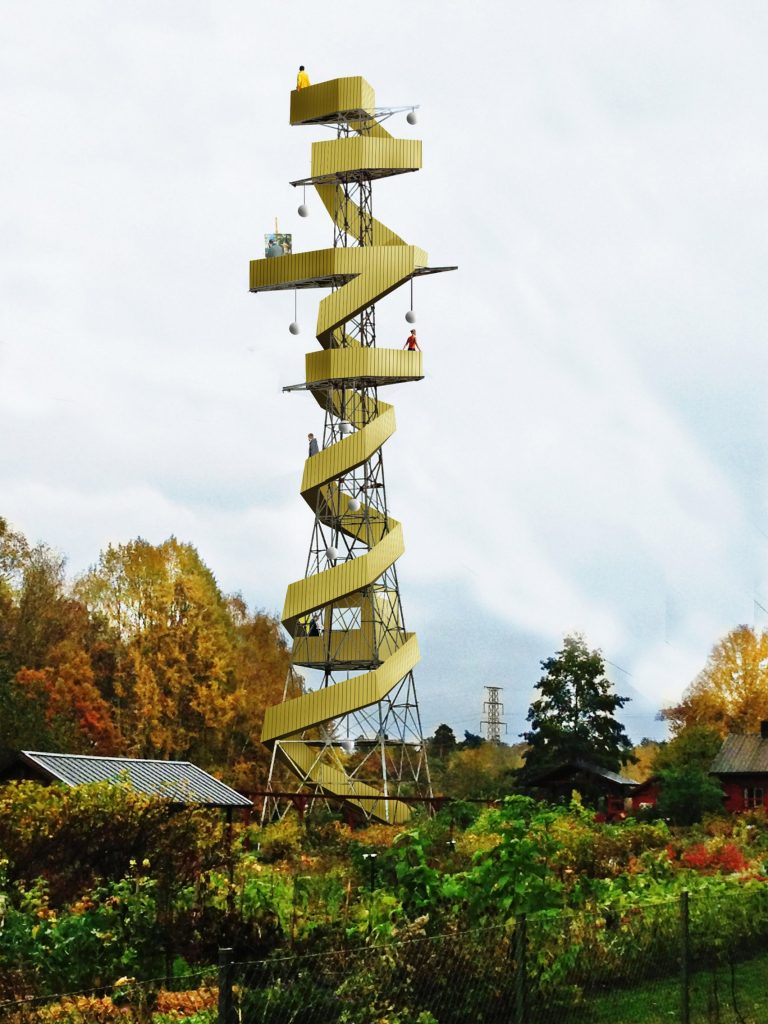
Power Tower by Anders Berensson Architects
Swedish practice Anders Berensson Architects has been commissioned by the Kungl. Djurgårdens förvaltning (Swedish Royal Court) to investigate the future of twelve big disused power towers situated in the urban national park Norra Djurgården in central Stockholm. As an alternative to demolition, the architects have proposed to transform one or two of them into picnic towers with a magnificent view over the park and the city of Stockholm.
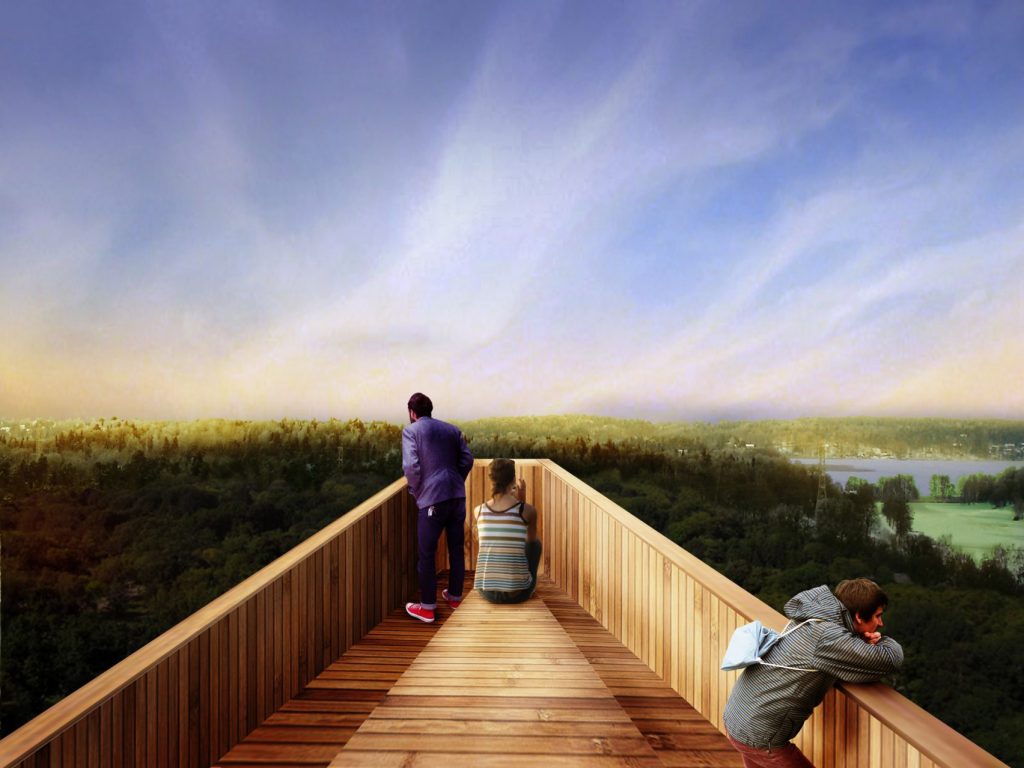
Power Tower by Anders Berensson Architects
Constructed to carry heavy power lines over the tree tops in the park. the towers are strong enough to hold platforms and high enough to offer a great perspective of the surrounding landscapes. The added stairs and platforms are made in wood to reduce weight and to contrast to the old structure.

Power Tower by Anders Berensson Architects
Named Power Tower, the project is designed with a kiosk in the lower levels, allowing visitors to buy their picnicking essentials, such as snacks and beverages, before the ascent. These kiosks would also act as gatehouses for the towers, allowing them to be opened and closed at different times of year.